Did you know that 59% of businesses don't have a documented content marketing strategy? However, 69% of the most successful marketers have a content marketing strategy that works according to Content Marketing Institute and Marketing Profs.
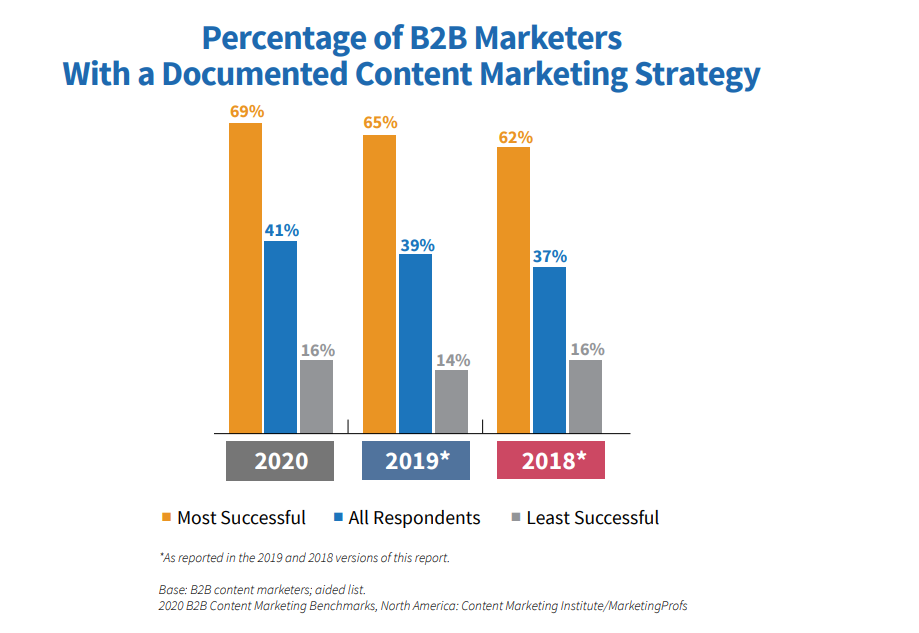
If you do not have a strategy you won't know whether you've been successful or not. 64% of respondents say that building a scalable content strategy is key to their educational needs.
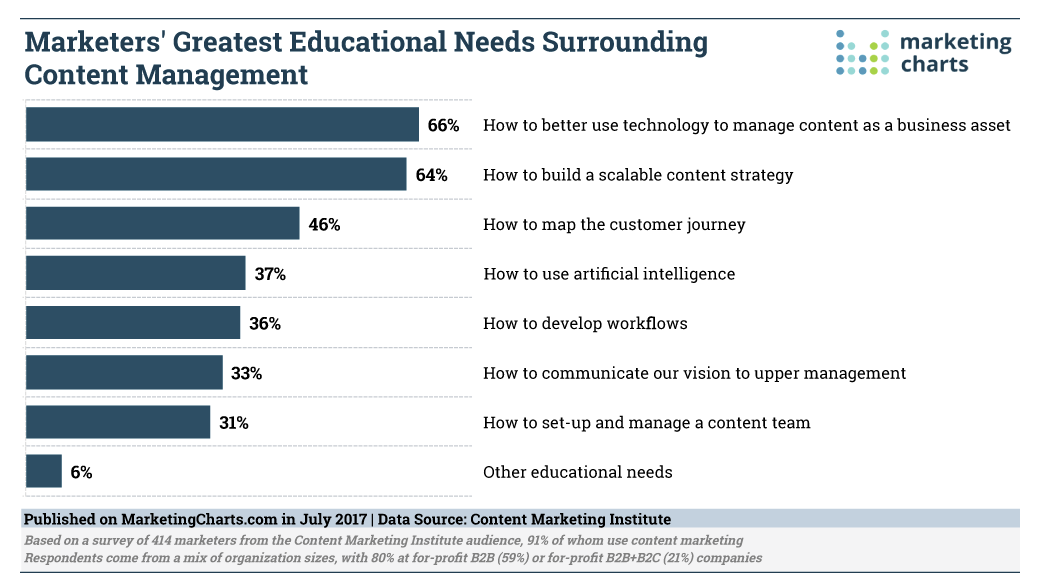
We'll walk through seven simple steps today to developing a content marketing plan that will grow your A/E/C technical services business without wasting time or money.
Step 1: Set Your Content Mission and Goals
The first step is to set your mission and goals. Start out by sending out on a content marketing mission statement. This will focus your efforts and keep you on track for creating the right content at the right time in your claim writing process. A content marketing mission statement has the following:
- Your target audience
- The content you'll use to reach them
- The benefit to your target audience
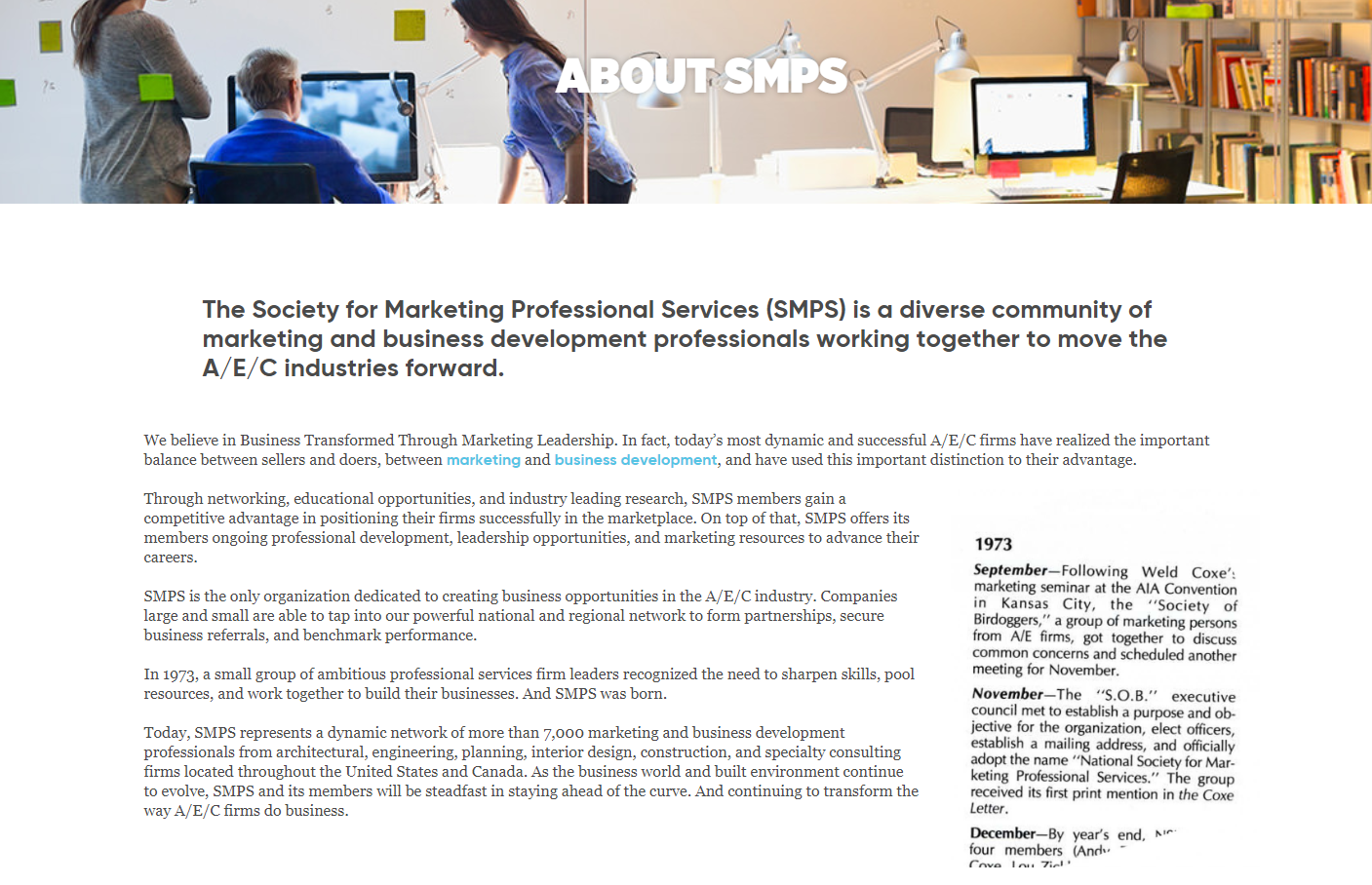
For example, we have the Society of Marketing Professional Services. An example in the graphic has the audience (A/E/C firms). It highlights the benefits (networking, educational opportunities and industry research). It also gives examples of what it’s content covers (creating business opportunities) to create a mission statement. Here's a formula:
We provide [target audience] with [type of content] to help them with [their business goals].
In developing your firm's content mission statement, here are some goals that we've seen:
- Improve revenue
- Make more sales and contracts to meet revenue goals
- Improved branding and perception of your business so you can be seen as a thought leader and influence and authority
- SEO success, which is ranking on page one of Google
- Reduced ad and marketing costs as your content becomes more effective and gains in domain authority you so you can stop having so much money on Google ads because your SEO is working
- Better social media engagement
Step 2: Establish Your KPIs
You want to make your goals actionable and measurable. You want to set key performers indicators for your content marketing strategy. This is different from your goals. They let you know what you've achieved by providing key milestones. You can have goals cover different parts of your digital marketing effort as well as business goals that we've seen in the mission statement. Having specific numbers helps you:
- Hit a revenue goal within the year
- Get more email signups for your white paper or case study as a sign of improving your inbound leads
- See an increase in site traffic and time on page
- Improve your ranking on certain keywords that are being tracked
- Get one client from your pillar pages content
- Decreased cost of acquiring leads
- Track your marketing spend per month
You can learn more about marketing R.O.I. in our blog here.
Step 3: Know your Audience, Clients, and Potential Clients
You need to be clear about who your audience is so you can create the right content to reach them.
Step 3A: Collect Demographic Data
First step in this is to collect demographic data. You can find them in social media analytics, web analytics and email subscriber analytics. You can get:
- Age
- Gender
- Education
- Income level
On Google Analytics, you can go to audience than interest and overview and then see what part of your audience is interested in.
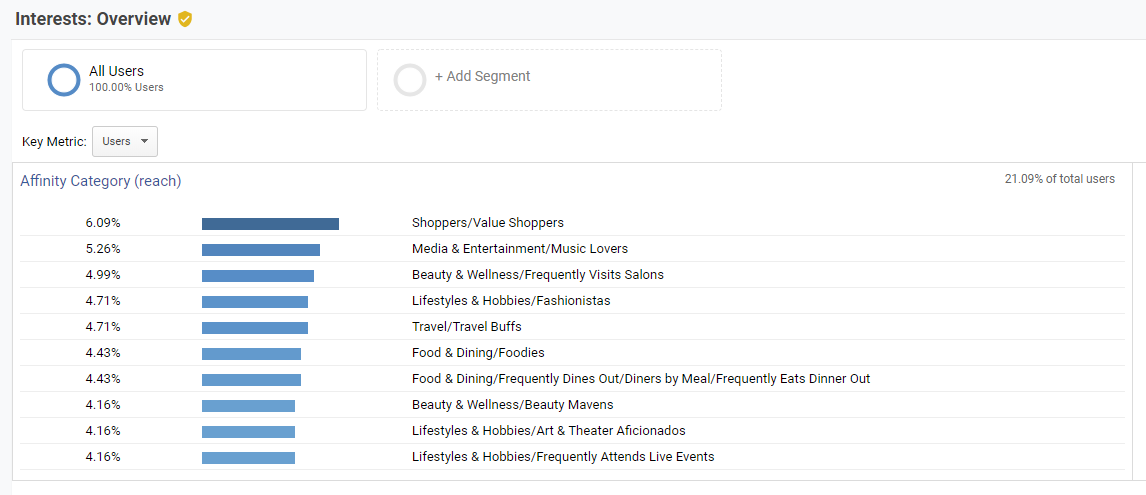
Step 3B: Do Market Research
You want to collect feedback from your current and future clients. This will give you insights into their current challenges, their most urgent needs, and how you can address their challenges or their content. You want to know where in terms of social media and news sites and social media so you are pushing out your content to the right places from collecting demographic data and market research.
Step 3C: Create Buyer Personas
These buyer personas describe your ideal readers and clients so you can target your content properly. These buyer personas include client challenges, sources of information and behavioral motivators. HelpSpot has a great buyer persona template and examples. So here are some questions you should ask when you're compiling your buyer persona.
- What are the biggest problems and challenges in your job?
- What would happen if your client didn't invest in your service?
- How do they get information? Is it via blogs, books, or white papers?
- What conferences do they attend?
- How do they convince their boss to make a buying decision?
- What social media do they consume such as YouTube videos, podcasts, or LinkedIn?
- What is the size of their company? In terms of revenue in your employees
- How is your job measured?
These questions can give you good insights into creating a good buyer persona.
Step 4: Do a Content Audit
If you have existing content, do a content audit, and it is not just blogs. Many firms already have content on the web that includes blogs, social media, content, podcasts, videos, etc. You can see the graphic below for all the content types so you can carry out a full content audit.
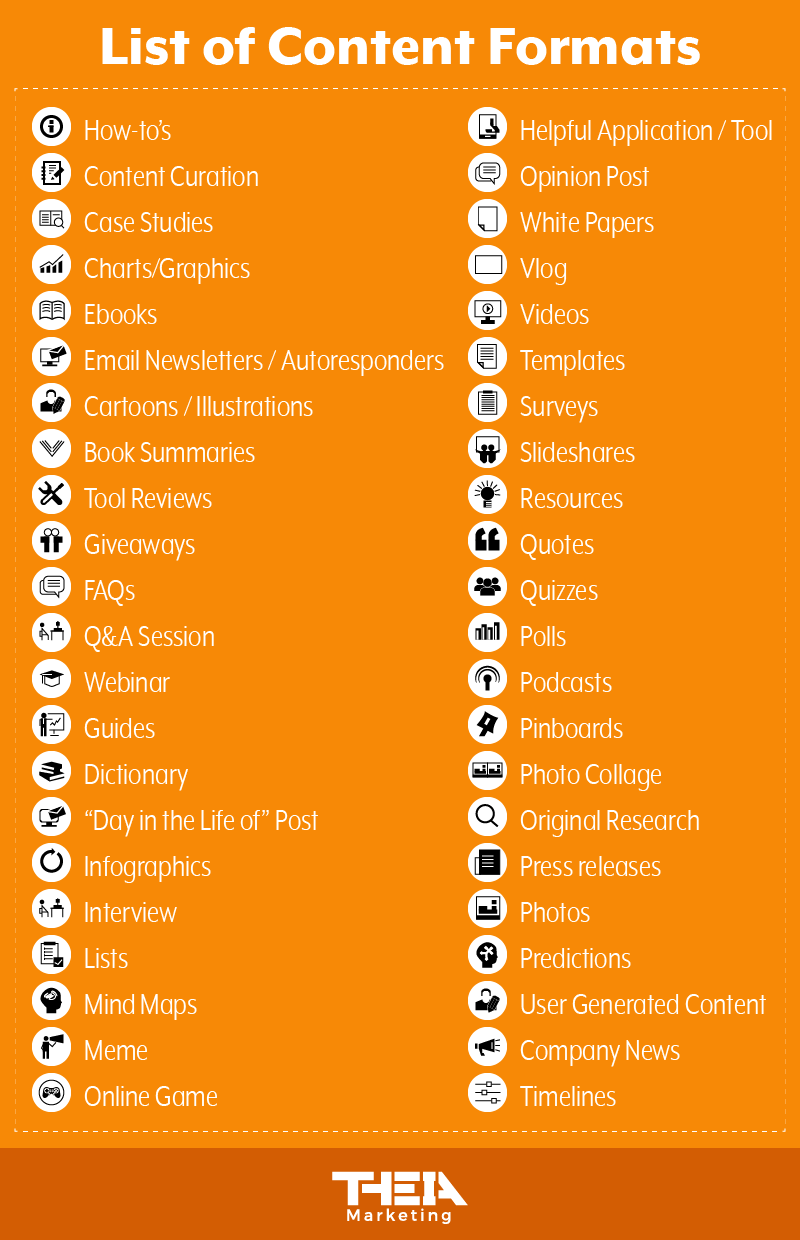
You can log all pieces of content such as blog posts, guest posts, so on, and then assess for success in terms of the KPIs you identified earlier and identify the gaps. You can do a content audit with a tool like moz.com you can see how your content is performing. You can look for stats such as the number of inbound links, search engine ranking for keywords and where you are on search engine results pages and social shares for content.
You can look for content gaps which include keywords related to your buyer personas, challenges you're not targeting. You can see if your content answer questions your target audience is asking but you haven't seen any answers or the answers could be improved upon.
Step 5: Establish Content Channels
You need to look at where your audience is hanging out and where you have a successful online presence, focusing on what's working and expand on there.
In HubSpot, you can go to reports, traffic analysis, then click on social media to see where your website traffic is coming from.
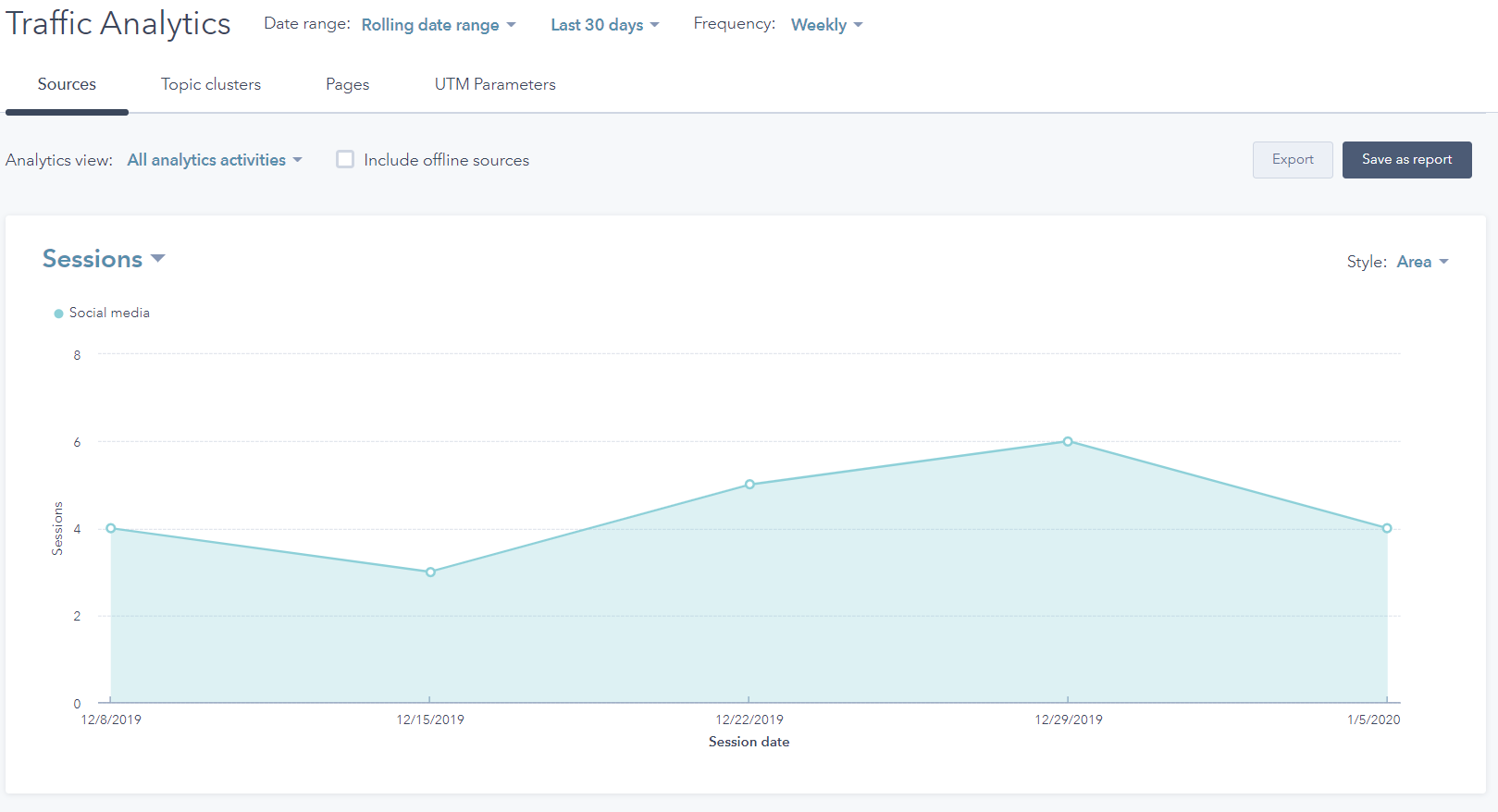
You can also use BuzzSumo multi find similar data. You can see charts of shares by network content type, content length, and top content.
Step 6: Determine Your Content Types
Determine the content types that you will use in your content marketing strategy. Here are some of the most popular content types marketers are creating today.
Blog Posts
You are currently reading a blog post. Blog posts live on your firm's website and should be published regularly to attract new and continuing visitors. Post should provide valuable content that makes your audience share on social media and generally posts should be between a 1000 to 2000 words for greatest SEO value. You can also experiment and see what works for your firm.
Ebooks
Ebooks are lead generation pools that potential clients download after submitting a lead form with their contact information. They are longer than a blog posts and might be a compilation of key blog posts. So how it works is there's a call-to-action form on a blog post that can direct potential clients to a landing page. Potential clients submit their information to download an ebook to learn the most valuable information for their firm. In turn, the business producing the ebook has a new lead for sales or business development and the sales or business development team can contact that lead.
Case Studies
Case studies showcase recent projects. It gives you the opportunity to tell a story of a client who succeeded in solving a problem by working with you. It can be in the form of a blog posts, video, ebook, podcasts, or an infographic. The case is a show that you can do the work and do it well. It helps to have a video testimonial with your client.
Infographics
Infographics organize and visualize data in a more compelling way than the words alone. They are great content for sharing a lot of data at one time. We like including infographics at the end of our blogs.
Videos
Videos are highly shareable across social media and websites. They are highly engaging and 40 times more likely to get shared on social media. Video is also the most preferred form of content, according to HubSpot Research.
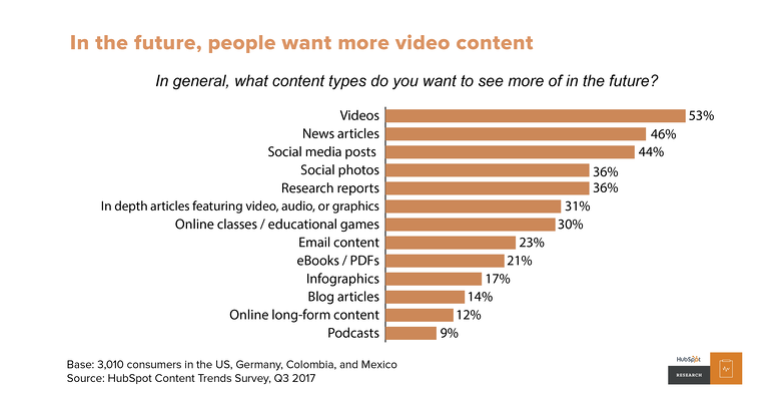
You can do simple videos like what I'm doing now, or you can hire a videographer and shoot some videos. I recommend start simple with your iPhone or webcam and then progress up the ladder as you see more engagement with your videos.
Podcasts
Starting a podcast will help potential clients find your brand if they're not interested in reading content every day. 32% of U.S. adults had listened to a podcast within the last month in 2019. Doing interviews is a particularly popular form of podcasting.
Social Media
Distribute your content on social media to gain more reach to potential clients. Social media networks are important that are important to the AEC industries is:
- YouTube
Step 7: Publish and Manage Your Content
The final step in managing your content is to publish and manage your content. You can read our content calendar post on how to organized your content for the year. We can help you do that as well. We can also create a monthly social media content calendar for you.
Many of the ideas you think of will be evergreen. Don't be just as relevant today as they are months from now, but don't ignore the timely topics either, which can help generate traffic spikes.
Remember, it takes time to build a content marketing strategy, keep track of your KPIs, and see where you need to change course if necessary to keep in line with your KPIs and keep in line with your mission statement.





